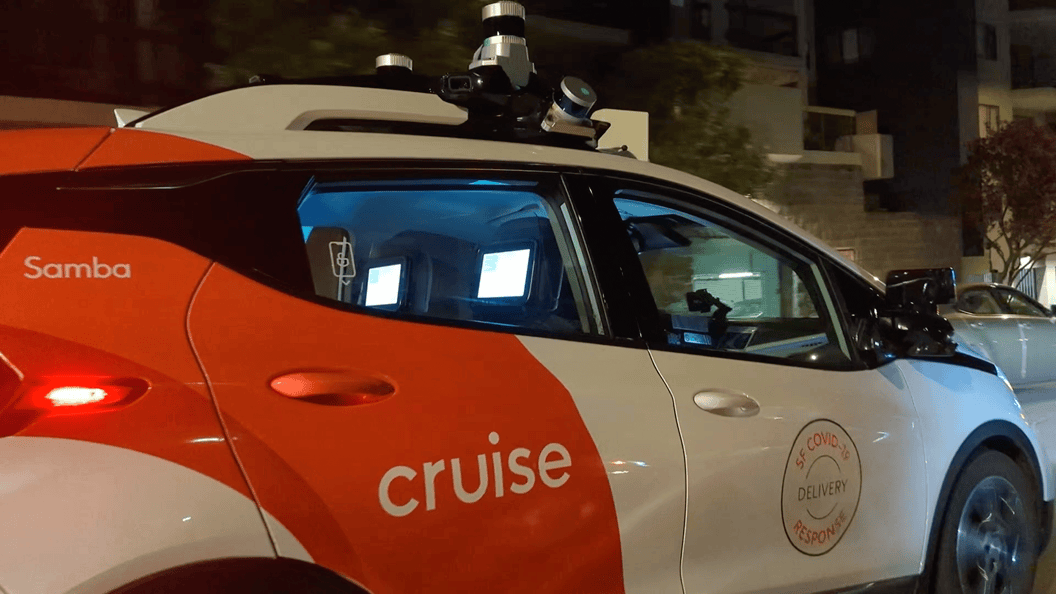Blog Post
3.9.2022
A Safe Way to Travel at Night
Share

It’s no secret that nighttime can range from being an intimidating to deadly time to get around. Whether it’s finding a ride at all, sharing the road with dangerous drivers, or safely getting to your doorstep, nighttime transportation needs dramatic improvement.

Pain points — quite literally — that are often involved with everyday nighttime driving interactions:
The scariest time to get around
Getting around at night is quantifiably more dangerous than during the day—50% of road fatalities occur at night, with only 25% of overall miles driven [1]. Simply put, by driving at night, you are exposing yourself to more risk. Whether it’s finding it hard to see at night, falling asleep at the wheel, having that glass of wine or two at dinner, or concerns about personal safety. We are all human and fallible, especially at nighttime—after a long day —the risk of falling asleep at the wheel is real. To put this into perspective, 1 out of 25 adults aged 18 years and older surveyed reported that they had fallen asleep while driving in the past 30 days. Statistically, this means that at a typical, busy intersection in San Francisco, one of those drivers has fallen asleep at the wheel in the last month. Even if you don’t fall asleep, driving tired is extremely dangerous. Being awake for 24 hours is equal to having a blood alcohol content of 0.10%, which is higher than the legal limit in the US [2]. All of this makes nighttime transportation an ideal fit for vehicles with driving capabilities that avoid common human fallibility.
People find it hard to see at night
Human vision is remarkable, but driving a multi-ton vehicle during nighttime is the ultimate test of that vision. Even though traffic is decreased at night, flashing lights, weather conditions, high beams, glare, or unlit areas all make the problem of driving extremely challenging, even when our vision is at peak performance. Furthermore, when our vision begins to degrade as we age, the problem gets substantially harder. For example, the average 50-year-old driver needs twice as much light to see as well as an average 30-year-old [3].
People are — rightly — worried for their personal safety
At night, moving safely is not just about driving from A to B. It’s also about walking to be picked up at A, and safely getting in the doorway of B. During this time, just getting to your car at night—which could be blocks away—can feel dangerous. Even when you’re safely inside a rideshare car, there is still a stranger behind the wheel. Unfortunately, in their first ever safety report a U.S. rideshare company revealed that 4,000 assaults had occurred between 2017-2019 [4].
Choices are limited
Whether you’re in a city, a suburb, or a rural setting, your transportation options are likely much more limited at night. While cities may seem as though they would have the largest supply of options, they still suffer from a similar shortage.
While normalcy has returned to post-pandemic public transit schedules, cities are still facing staff shortages, budget cuts, as well as a lowered ridership as many residents continue to work from home. Additionally, for many – including shift workers, hospitality employees, healthcare professionals, and traditionally under-resourced communities – nighttime transit services were already limited and often far from the commuters final destinations, both pre-pandemic and today.
To add to an already frustrating environment for people, human rideshare options cited lack of drivers as a reason for less availability, leading to longer wait times and more expensive rides all over the country [5]. Again, an issue that becomes exacerbated at night when optionality continues to drop. The New York Times tracked a story of Debora Lima who on a regular night out in Miami tried to book a ride that pre-covid took under five minutes to get to her, so she was surprised by a wait time of 19 minutes. On top of that, the cost of her ride was much more expensive. According to Rakuten Intelligence, many human rideshare options inflated by 40% from April 2020 to April 2021 [6].
Cruise’s initial driverless ride-hail service is focused on the challenges of nighttime transportation. So, what does that look like?
A fleet of self-driving vehicles that drives carefully, consistently, and never under the influence.
High vehicle availability during nighttime hours with world-class customer service.
Purpose-built nighttime safety features for the pickup, driving, and dropoff experience.
At Cruise, we feel a sense of urgency to deploy our self-driving vehicles, but we know we must do so safely. Nighttime offers not just an opportunity to improve safety and provide a superior customer experience, but it also accelerates the responsible deployment of our technology. So, as our first fully driverless vehicles hit the streets of San Francisco, our strategy of starting with nighttime is the responsible way to do so.
Our self-driving vehicles have been trained on millions of miles of San Francisco driving—among the most challenging driving conditions in any city in the country. This rigorous training is helping Cruise develop a safer way for customers to traverse city streets, and, for now, that will be at night.
Our state-of-the-art computer vision—powered by multiple sensors that have no need for active illumination—enables our self-driving vehicles to better see pedestrians, vehicles, bicycles, and more in the darkest of nights. Our use of cutting-edge machine learning means our self-driving vehicles think multiple steps ahead of human drivers, planning intelligently and safely for dangerous scenarios. And, our self-driving hardware is high-performance and rigorously validated, resulting in a ride you can rely upon.
What will this look like for our customers? A safe, comfortable, and stranger-free experience from doorstep to doorstep.

Providing a safer option for nighttime travel
We’ve heard from night-shift workers, students, and many others about just how needed a better solution to nighttime transportation is, but we also believe this service has universal appeal. Anyone can relate to the vulnerability of moving at night, and we can’t wait to see the positive impact our nighttime self-driving service will have. So, San Franciscans (or anyone planning a trip or spending time in the city), please sign up for our Cruise Community waitlist, we’d love to have you along for the ride.
